First let's see the deadlines again:
Next class, 9/3 your essays and the art work for your final projects are due!
Please be prepared to submit a hard copy and a digital copy of your artwork, just like
the scan art project that is due today. Reminder, your essays need to be reviewed by the
IDEA CENTER staff before you complete the final draft.
I found this great site, maybe some of you have seen it. Not only are there lot's of cool
album covers but good articles on the art form and the designers. Check it out!
Guidelines:
Final Project “Mixed Tape” Cover Art
Use your developing knowledge of Color and Design Theory to produce a unique and effective
design for a mini mixed tape (CD actually).
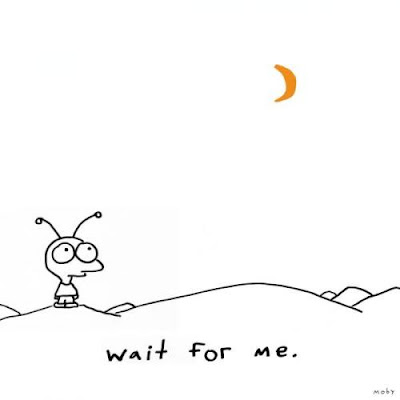
Requirements:
Final Project due 9/3, consisting of a CD containing 4-6 songs of your choosing, not necessarily
by the same artist(s) and corresponding cover art, plus a typed 250 word project description.
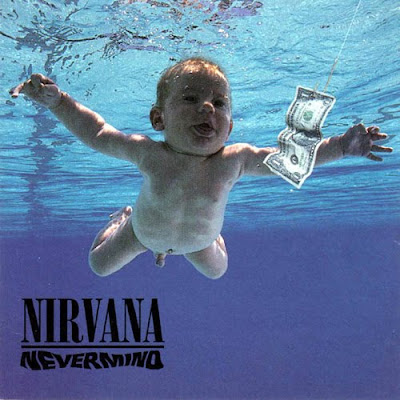
Dimensions for cover art must be square. Actual size of a CD is 4.75 x 4.75 but your copy can be larger. Most of us see cover art digitally now so the size can vary but the proportions should not. On the due date, submit a hard copy and a digital copy of your project.
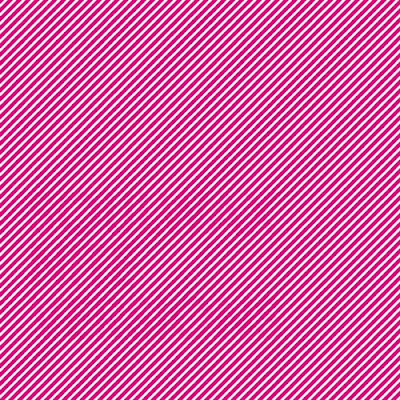
wow...can you see that?
The project description must describe how your design will effectively market the anthology.
This is your pitch to the hiring committee. You want to impress them with your knowledge of
Design language, as well as your knowledge and understanding of successful
trends in album cover art design.
On the last day of class, you will play a few moments from the CD and give an oral presentation addressing the effectiveness of your design and how it will enhance the overall performance of the music project. Be prepared to talk about your work for 3-5 minutes, with an question answer period at the end of each presentation.
Over the weekend you have created 6 concept sketches or thumbnails drawings, showing several designs and a few variations on those designs. In addition to the concept sketches,you should have at least 2 color schemes and two types of media which you are interested in using
in this project. Compile your sketches, color schemes, media choices in an organized manner.
You will share these with your classmates shortly.
After sharing your work with your peers you will decide on a final design and title for your project. Once that has happened, you will have open lab time. You may choose to work at your desk, go to the library or the galleries. There are handouts to be filled out for each activity and the entire booklet must be turned in at the end of class for credit.
Let's look at some cover art to get inspired.
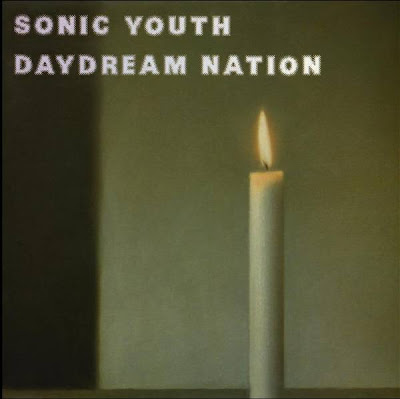
According to the designer, when this album came out, the late 1980's, things were pretty dismal politically, with Reagan as president and the cold war threatening nuclear annihilation. The candle symbolized hope. Hey, do you know that this is a painting. You've seen the artists work before in this class.

Gerhard Richter
Art and design always mixing it up.
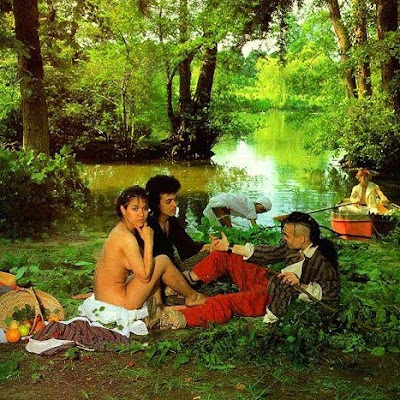
Here's some cover art from a Bow-Wow-Wow album, another 80's band. Some of you might know
their cover to "I want candy!"
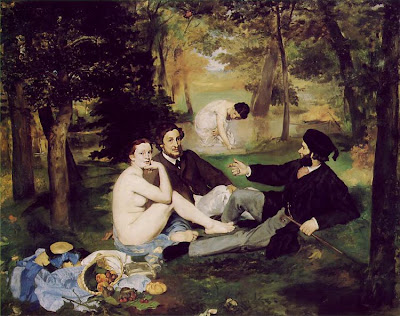
The design was inspired by Edouard Manet's Luncheon on the Grass, 1863, a rather controversial painting for it's time. Observe how odd the perspective is and the way the woman boldly looks into the eyes of the viewer. Groundbreaking.
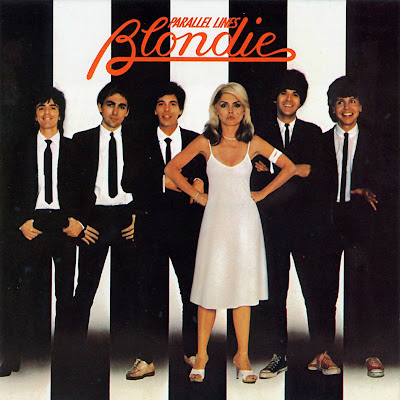
Strong design, almost achromatic color scheme and very balanced.
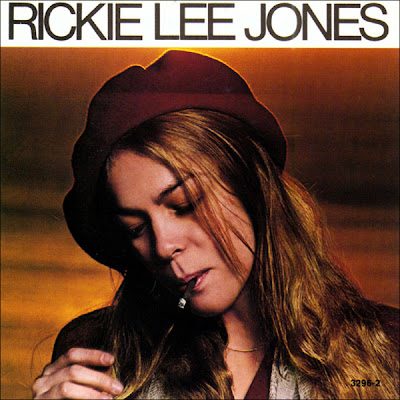
Warm, monochromatic color scheme sure sets a mellow mood.
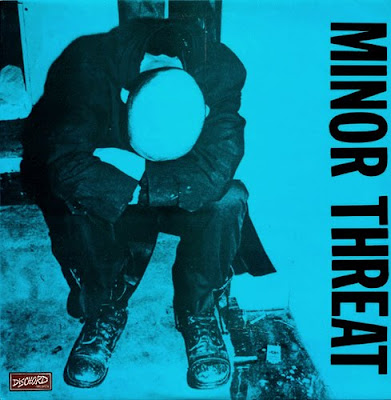
Reminds us of Picasso's blue-period!
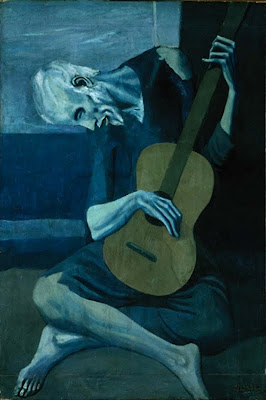
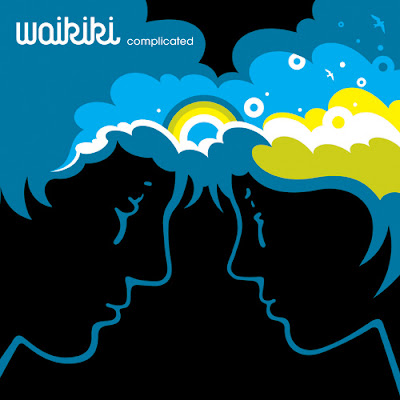
Symmetrically balanced, with a nice twist.
Soooo 80's! Cover art by Patrick Nagel
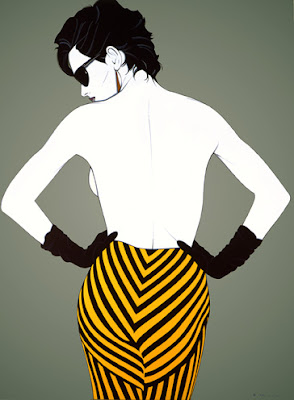
Fine art by Patrick Nagel
Notice how the black background really makes the colors POP!
It maximizes color intensity.
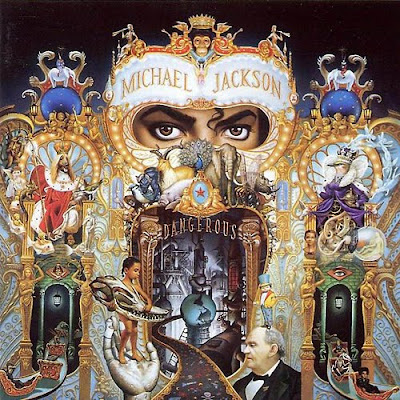
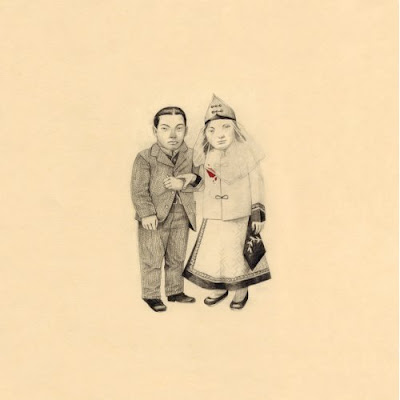
Notice the little spot of blood on the brides dress. Very mysterious. Makes one want to take another, closer look.
And the scale is rather odd. Another intriguing touch.
Now get to work!
First take a look at your own work and fill out the self-evaluation worksheet.
Then move on to the Peer Review worksheet.















































